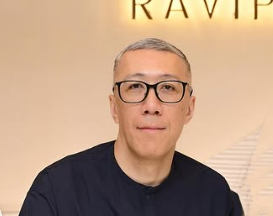Through the use of collectible art, Kasing Lung’s artistic influence has significantly shaped the story of emotional storytelling. Lung’s works, especially Labubu, have inspired a movement that crosses the boundaries of pop aesthetics, psychology, and visual culture by fusing whimsical creatures with nuanced emotional resonance. Rather than directly owning the empire he helped create, his estimated net worth, which ranges from $10 to $50 million, reflects his wide artistic reach. That difference is important.

Labubu was licensed by Pop Mart, a huge collectible toy company that has experienced unprecedented financial success. The founder of the company, Wang Ning, saw his wealth rise by $8 billion in a single year, significantly surpassing Lung’s ten-year artistic gain. An enduring imbalance is revealed by this remarkably similar pattern to other artist-corporate dynamics: creativity plants the forest, but the landowners take the majority of the trees.
| Attribute | Details |
|---|---|
| Name | Kasing Lung |
| Estimated Net Worth | $10–$50 million (as of 2025, speculative) |
| Profession | Artist, Toy Designer, Illustrator |
| Nationality | Chinese (based in Hong Kong) |
| Known For | Creator of Labubu, collaboration with Pop Mart |
| Major Collaborations | Pop Mart, Art Basel, Dover Street Market, Perfect Magazine |
| Auction Record | HK$330,200 (for original artwork, approximate upper-bound in USD) |
| Latest Exhibition | Art Basel Hong Kong 2025 |
| Influence Area | Art toys, contemporary collectibles, fashion & pop culture |
| Verified Source |
Lung secured Labubu’s mass-market debut by working with Pop Mart, which made it a mainstay on auction blocks, fashion shoots, and collector shelves. However, Lung continued to be largely a royalty-earning partner, in contrast to fashion designers such as Virgil Abloh, who acquired equity in their brands. Although this route guaranteed steady income, it also greatly diminished his upside in Pop Mart’s meteoric rise.
As digital art and collectibles gained popularity during the pandemic, Lung’s hybrid creations were especially helpful for people who needed tactile expression during isolated moments. A generation dealing with existential exhaustion, absurdity, and processing loss was moved by Labubu’s eerie smile and cheeky stance. Lung brought attention to the expanding relationship between identity, trauma, and play through these creatures.
Through the use of this emotional depth, Lung’s illustrations became popular in luxury fashion. Those with pets wearing Labubu-themed clothing waited for hours at a London event in 2025 with Dover Street Market and Perfect Magazine. That imagery was more than just content for social media. It heralded a shift toward the dominance of illustration-driven intellectual property in luxury branding narratives as well as toys and prints. Lung’s universe thrives on stillness—expressive silence encased in fur and fang—in contrast to anime, which rises through lengthy storytelling.
Collectibles have evolved from a specialized fandom to a worldwide commodity in the last ten years. Gallery hierarchies have been upset by KAWS’ bloated toys, Hajime Sorayama’s chrome bodies, and Daniel Arsham’s eroded sculptures. Lung’s ascent significantly raised the status of “cute surrealism,” a term that some collectors now employ to characterize pieces that have a haunted yet lovable quality. Lung’s influence is more subdued than KAWS’s, despite the fact that she incorporates vulnerability into vinyl.
His works have quietly entered conventional art valuation frameworks in recent years. Although they are not unusual, auction records such as HK$330,200 for a single illustration show a change in the market. Curators, critics, and capital investors are now interested in Lung’s work in addition to collectors. His legacy has become especially inventive in contemporary Asian pop art circles as a result of that shift—from shelf to salon.
Lung’s journey offers cautious hope for aspiring artists. Although his success highlights the value of unique visual storytelling, it also highlights the necessity of strategic business foresight. Although supporters feel that his wealth ought to be commensurate with his worldwide impact, his net worth is far less than the financial behemoths that have been erected around his creations. Artists can enter new venues through strategic partnerships, but ownership and equity are frequently elusive unless specifically discussed at the beginning.
Collector culture has increased since Pop Mart’s initial public offering. These days, Labubu figures are released like sneakers, with limited editions being resold at ridiculous markups. Although Lung does not directly profit from this secondary market craze, it does increase his cultural capital. He is now well-known for his distinctive illustrations that appear on coffee mugs and gallery walls, two extremely varied mediums that few artists can maintain.
Lung’s story is similar to that of many Asian character creators in the context of creative labor. Pokémon, Tove Jansson’s Moomins, and Sanrio’s Hello Kitty were all created by artists whose ideas were later commercialized. However, Lung’s case seems more emotionally charged. His brand evokes intimacy rather than mass-produced cheerfulness, perhaps because of the quiet devotion of his fans or the expressive melancholy in his figures.
Lung has broadened his platform without weakening its voice by incorporating his work into a variety of verticals, such as art fairs, high fashion, and collectible toys. For fans who appreciate authenticity, this has been especially successful in creating a brand that feels incredibly dependable. In a time when narrative is frequently overshadowed by branding, Lung’s illustrations are surprisingly honest.
Both critics and collectors will be examining artist compensation models more closely in the upcoming years. The disparity between Lung’s estimated tens of millions and Wang Ning’s soaring billions has spurred more extensive discussions regarding value distribution in creative commerce. Do royalties need to change? Is it possible to restructure licensing agreements to improve long-term equity?
Perhaps without realizing it, Lung has sparked these discussions with Labubu’s quiet yet expressive gaze. Care and contradiction are embodied by his characters. They are emotional mirrors that reflect chaos, joy, loss, and curiosity rather than aspirational icons. Because of this, his art has struck a particularly deep chord, particularly with Gen Z and millennials, who frequently find solace in monsters rather than inspirational sayings.
Lung has been an indispensable presence at recent exhibitions such as Art Basel Hong Kong 2025. His booth’s intimacy, where original sketches were displayed next to life-size figures, was lauded by critics. Lung’s space felt reflective, attracting rather than overwhelming audiences, in contrast to more forceful art-fair marketing. His greatest branding strength may be that gentle insistence rather than brazen commercialism.
Labubu’s trademark toothy grin has come to represent this silent revolution since its debut more than ten years ago. Its enduring appeal stems from its emotional resonance rather than viral tricks. Furthermore, Kasing Lung has created an environment where vulnerability is valued and sincerity flourishes, despite the fact that he may not own stock options or billionaire valuations.
